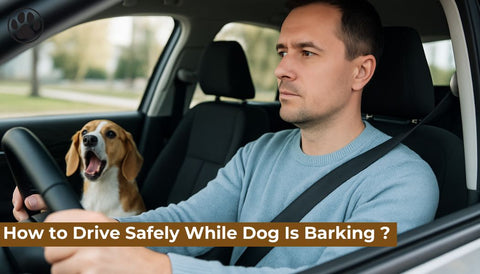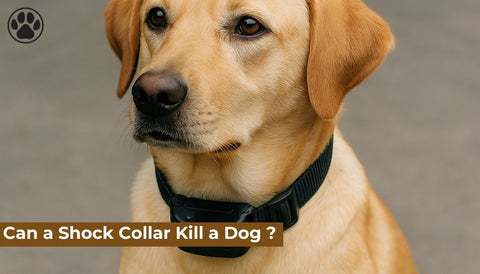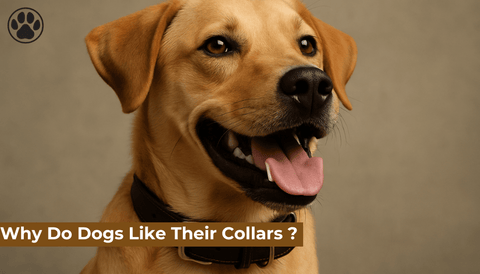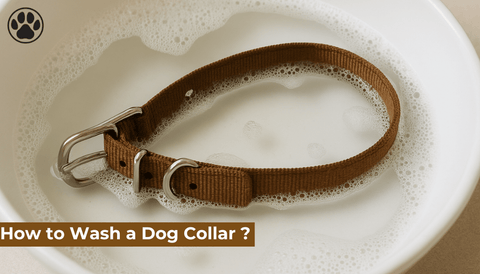
Why Won’t My Dog Drink Water?
of reading - words
Water is essential to every living being, and that includes your dog. While it's common for a dog’s water intake to fluctuate slightly based on weather, activity, or diet, a sudden or prolonged refusal to drink water can be concerning. If you’ve found yourself asking, “Why won’t my dog drink water?”, you're not alone. Many pet owners encounter this issue at some point—and it’s crucial to understand the possible reasons and when to seek help.
This article explores the most common causes behind a dog’s refusal to drink water, what signs to look out for, and what you can do to encourage healthy hydration.
Why Hydration Matters for Dogs
Just like humans, dogs rely on water to regulate body temperature, digest food, circulate blood, and eliminate waste. In fact, water makes up about 60-70% of a dog’s body weight. Dehydration can lead to serious health problems, including kidney issues, heatstroke, and even death if left untreated.
Generally, a dog should drink about one ounce of water per pound of body weight each day. For a 50-pound dog, that means approximately 50 ounces of water. If your dog suddenly stops drinking or drinks noticeably less than usual, it's important to investigate.
Common Reasons Why Dogs Stop Drinking Water
1. Illness or Pain
When a dog is unwell, especially with infections, fever, or dental pain, they may eat and drink less. Conditions like kidney disease, urinary tract infections, and pancreatitis can cause nausea, making your dog reluctant to drink.
If your dog also seems lethargic, is vomiting, or has diarrhea, a vet visit is crucial.
2. Dental Problems
Mouth pain is a major reason dogs stop drinking. Infections, broken teeth, or inflamed gums can make lapping water painful. If your dog drools, chews oddly, or avoids hard food, check for signs of oral discomfort.
3. Change in Environment
Dogs thrive on routine. Moving homes, a new water bowl, different flooring near the water station, or even a loud appliance near the bowl can unsettle them. Sensitive dogs may become too anxious to drink in a new or unfamiliar setting.
4. Dirty Water or Bowl
Dogs have a strong sense of smell. If the water is stale, contains food bits, or the bowl is coated with biofilm, your dog may turn their nose up. Always keep the water bowl clean, and change the water at least once or twice a day.
5. Fear or Trauma
Dogs can develop negative associations with their water bowl. If they slipped while drinking or were startled by a loud noise, they may avoid the bowl entirely. Try relocating the bowl and observe if behavior changes.
6. Age-Related Changes
Senior dogs may lose their sense of thirst, just like elderly humans. Some may have arthritis, making it uncomfortable to walk to the bowl or bend down. Consider using elevated bowls for older dogs.
7. Recent Surgery or Medication
Certain medications—like diuretics or painkillers—can alter your dog’s hydration needs or appetite. After surgery, it's normal for dogs to drink less for a day or two. However, if this continues, contact your vet.
8. Change in Diet
Wet food contains up to 80% moisture, while dry kibble only has around 10%. If you recently switched your dog from dry to canned food, they may drink less because they’re already getting water through meals.
Signs of Dehydration in Dogs
If you suspect your dog is dehydrated, look for these common signs:
-
Lethargy or weakness
-
Sunken eyes
-
Dry gums and nose
-
Loss of skin elasticity
-
Thick saliva
-
Panting
A simple test: Gently pull up the skin at the back of your dog’s neck. If it doesn’t snap back quickly, your dog may be dehydrated and need medical attention.
How to Encourage Your Dog to Drink More Water
Once you’ve ruled out serious medical issues, try these strategies to help your dog hydrate:
1. Clean and Refresh Often
Change water at least twice daily, and wash the bowl with hot, soapy water to remove bacteria and odors.
2. Offer Multiple Water Stations
Place water bowls in different rooms or outside if your dog spends time in the yard. Make sure bowls are accessible and not in loud or high-traffic areas.
3. Try Different Bowls
Some dogs are picky! Try a ceramic, glass, or stainless steel bowl instead of plastic, which can retain smells.
4. Add Flavor to the Water
Low-sodium bone broth or a splash of tuna water (in spring water, not brine) can make water more appealing. Just make sure not to add anything with harmful additives or excess salt.
5. Use a Pet Water Fountain
Running water can be more inviting for dogs. Pet fountains filter and aerate water, encouraging dogs to drink more—especially those who enjoy drinking from faucets or puddles.
6. Add Moisture to Food
Mix wet food into your dog’s meals or add a bit of warm water to dry kibble to increase fluid intake.
7. Use Ice Cubes as Treats
Some dogs love chewing on ice cubes, especially on hot days. You can even freeze broth or pureed fruits into cubes for a fun, hydrating snack.
When to See a Veterinarian
If your dog refuses water for more than 24 hours, or shows any signs of illness or dehydration, contact your vet immediately. Dehydration can progress quickly, especially in puppies, small breeds, and senior dogs.
Prompt intervention can help prevent complications and uncover any underlying medical conditions.
Prevention Tips for the Future
-
Establish a routine so your dog knows where and when to drink.
-
During hot weather or after exercise, monitor their water intake closely.
-
Keep a travel bowl or bottle on hand for walks or trips.
-
Take extra care with senior dogs, who may not feel thirst as strongly.
Conclusion
If you're wondering, “Why won’t my dog drink water?”, the answer could range from a mild environmental change to a more serious medical issue. Always monitor your dog’s behavior closely, check for signs of discomfort or dehydration, and ensure that water is clean, fresh, and accessible.
Encouraging hydration is one of the simplest yet most important ways to care for your dog’s health. When in doubt, don’t hesitate to contact your veterinarian—they’re your best resource for understanding and supporting your pup’s well-being.




